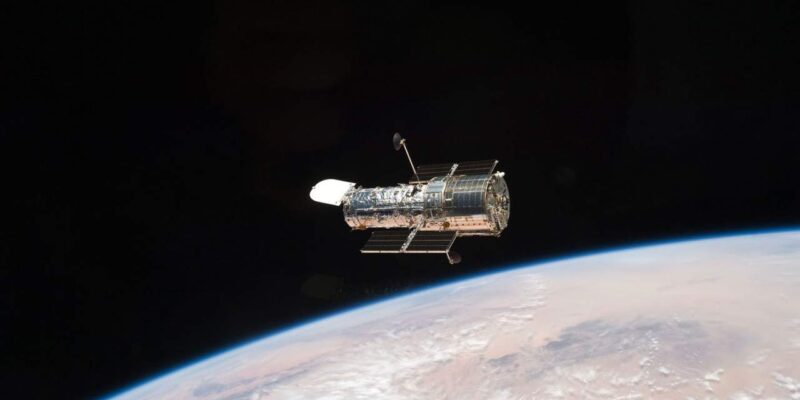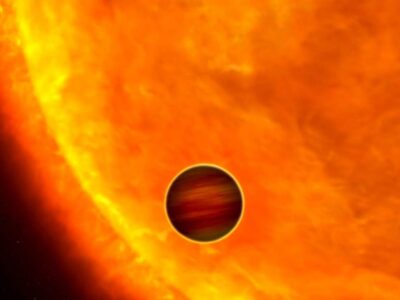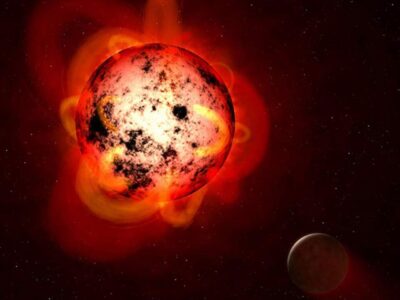the growing Hubble Space Telescope has had a rough time, with two major cases of the telescope being unfit to conduct wisdom operations. NASA verified this week that Hubble has returned to full wisdom operations with all four active instruments collecting wisdom data. The ringing overlook went into safe mode when instruments recorded synchronization communication issues.
As of December 7, no synchronization communication issues have been recorded since NASA began covering on November 1. While the space telescope has returned to full wisdom operations, Hubble platoon members are still working on software changes for the major wisdom instruments aboard the telescope that will allow them to continue working if farther synchronization communication issues arise. The first of the four active instruments NASA plans to upgrade with new software will be the Cosmic Origins Spectrograph.
That instrument is anticipated to get a software update by the middle of December. The three other instruments will also get streamlined software in the coming months. Hubble has been conducting wisdom operations in route around the Earth for further than 31 times. Latterly this month, it’ll get an ringing mate overlook with the James Webb Space Telescope launch.
Despite Hubble’s age, NASA expects it to continue working in confluence with the Webb Telescope well into the current decade. Hubble was down for multiple weeks due to the synchronization issue. Preliminarily, on November 28, the platoon recovered the Cosmic Origins Spectrograph.
Before that instrument was recovered, the Hubble platoon recovered Wide Field Camera 3 on November 21, the alternate instrument aboard the space telescope recovered after the Advanced Camera for Checks. NASA chose to recover the Advanced Camera for Checks first because it had the smallest implicit complications if synchronization dispatches were missed. Hubble operations were suspended on October 25, when the telescope automatically went into safe mode when synchronization dispatches were missed.
Beforehand in November, the Hubble platoon was fastening sweats to insulate the problem on the tackle inside the overlook commanding the instruments, which was part of the Science Instrument Command and Data Handling Unit. The specific element was the Control Unit responsible for generating synchronization dispatches transferred to the instruments. The first instrument NASA recovered had n’t been active since 2010, called the Near Infrared Camera and Multi Object Spectrometer. The instrument was killed when the Wide Field Camera 3 came functional.
Platoon members actuated the hibernating instrument to collect information on lost synchronization dispatches without risking any of the instruments presently being used. While the instruments were in safe mode, NASA says the spacecraft itself continued operating typically. The last time Hubble entered safe mode happed in the summer of 2021 Hubble’s Summer Safe Mode Extravaganza NASA began applying the major fix to recover Hubble from safe mode inmid-July 2021. The issue during summer had to do with a cargo computer that managed the telescope suddenly shutting down. Multiple sweats to bring the telescope back online failed, and some stressed Hubble might be down for good. The tackle at the center of the issue was the same tackle that caused major issues for Hubble in the history.
In 2009, NASA conducted Servicing Mission 4, transferring astronauts to replace some Hubble tackle with newer performances. Indeed though the tackle was changed in 2009, the design was the same as the tackle Hubble firstly used that was developed in the 1970s. The challenge moment for NASA is that there’s no way to conduct ringing space repairs since the space shuttle line has retired.
The issues during the summer with the cargo computer were narrowed down to the Power Control Unit or PCU. The PCU is meant to supply a steady voltage for the cargo computer to operate on. The system was designed to spark a protection circuit to shut down the cargo computer if voltage situations swerved significantly from the needed five volts.
NASA determined grounded on in- depth analysis that voltage situations from the controller were outside the 5V operating range and had tripped the secondary protection circuit. An alternate thesis was that the secondary protection circuit degraded and came wedged in the inhibit state. Originally, NASA tried to reset the PCU ever, but that failed. The fix that was settled on was switching Hubble to the backup PCU, which needed other spacecraft systems to be switched to backups.
Before any form attempts could be made to recoup the telescope from safe mode, a review board had to authorize changes to the systems aboard the ringing telescope. The formal review was completed on July 13, and the form attempt was approved on July 14 and listed to be enforced on July 15. The fix proved successful, and the telescope was recovered. Still, with the spacecraft now running on backup tackle, any failure in those systems in the future could bring an end to Hubble’s further than three decades of observing the macrocosm.
Hubble was back online and conducting full scientific compliances only days after the fix was applied. With the James Webb Space Telescope launching latterly this week, if another tackle failure aboard Hubble occurs, astronomers and scientists will at least have another instrument in route that’s working.
Webb Had Its Own “ Incident The Webb space telescope has had its own problems, with the rearmost being late last month while preparing the telescope for launch. NASA says the incident happed in French Guiana at the satellite medication installation. While platoon members were working on attaching the telescope to the launch vehicle appendage, a clamp band suddenly released, performing in a vibration being transferred to the spacecraft.
The space telescope is an extremely sensitive instrument, and the vibration started fresh testing to insure there was no element damage. As of now, it appears the telescope is fine, and it’s presently listed to launch on December 22. Still, it’s worth noting that the telescope is 14 times behind schedule. In addition, Webb has reportedly gone over its original budget by as important as 20 times, with a cost as of 2016 estimated to be$ 10 billion.















![How to solve [pii_email_af9655d452e4f8805ebf] Error?](https://themediahubs.com/wp-content/uploads/2023/02/U9rr3rhWhUvxCSyrdw3r5MZLGTsfOGbJeliDmntx-1-1-400x225.jpg)



![How to solve [pii_email_af9655d452e4f8805ebf] Error?](https://themediahubs.com/wp-content/uploads/2023/02/U9rr3rhWhUvxCSyrdw3r5MZLGTsfOGbJeliDmntx-1-1-180x180.jpg)
Comments